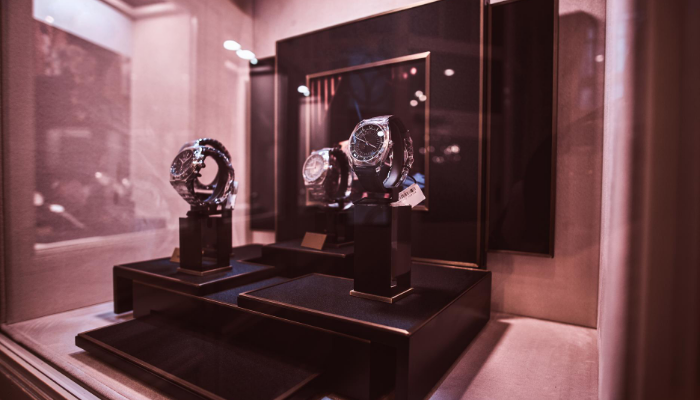Luxury watches have a long and colorful history. The legendary Swiss watchmakers date back to the 16th century when Huguenots, followers of John Calvin, fled persecution in France for the safety of the Swiss Alps near Geneva.
Huguenot clock makers combined their skills and techniques with that of Genevan jewelers and goldsmiths to make watches. It was a means of continuing their livelihood under Calvinist rule, which forbade wearing jewelry. Watches were allowed as a practical accessory and so began an industry that is still known around the world today for its high quality and beauty.
An Overview of the History of Luxury Watches
Luxury watches today are as functional as they are stylish and beautiful. They are valued as collectibles, status symbols, and art. Some luxury watch brands like Rolex are household names but some of the most luxurious are all but unknown to the average person. And there are dozens of fine luxury watchmakers, in Switzerland, France and elsewhere, all of whom make watches worth the investment.
A luxury watch is a work of art and a masterpiece of craftsmanship. Some luxury watches have 800 or more components and are still hand-assembled. At the low end, luxury watches sell for about $1,000. Many luxury watches have a price tag of 30 times that amount or more, a few sell for close to a million dollars.
Collecting Luxury Watches
A beginning collector drawn to luxury watches may be overwhelmed by the variety of choices from the simply elegant to the stunningly beautiful and multi-faceted functions available in fine timepieces made by dozens of reputable makers.
A sound bit of advice to anyone interested in adding a luxury watch to one’s collection is to study the watches and the companies before buying one on impulse. There are several factors to consider when purchasing a luxury watch, especially if it is being purchased, in part, as an investment.
The reputation of the brand is important. Rather than relying solely on a salesperson, talk to people who own luxury watches, study information available about the watchmakers and their watches, and find out what dealers and collectors are saying about watches on Internet forum sites.
Luxury Watches with Added Value
Many watch connoisseurs place high value on the number of complications a watch has. Complications are mechanical functions other than basic time telling like perpetual calendars, second time zone, or lunar phases. Generally speaking the more complications a watch has, the more valuable it is.
Other watch enthusiasts are interested in the beauty or style of the device. These watch buyers look for sleek elegant designs and ornamentation like diamonds or other gemstones.
Other details to consider when purchasing a luxury watch that can increase its value over time are its rareness, whether it is a limited or special edition, its warranty, and, in the case of previously owned watches, if its provenance can be traced.
Subtle Differences Between Luxury Watch Brands
With those basic tips in mind, here are a few things to know about some luxury watch brands. Rolex and Cartier are the two best-known brands and both make fine watches in a wide range of prices. The best-known brands are not always the most desired by collectors. In terms of status and overall quality, there are several luxury watches valuable to connoisseurs and aficionados.
Luxury Watches for Yachtsman, Contact Sports, and Other Special Interests
Two of the top Swiss-made watches are Patek Philippe and Bregeut. Both companies make exquisite watches with multiple complications and jewels. Patek Philippe holds the record in number of complications. In 1989, they created a pocket watch in honor of their 150th anniversary with 33 complications including a celestial chart with 2,800 stars. Other luxury watchmakers with solid reputations include Piaget and Bulgari of Italy.
Some watches are designed for special interest markets. Breitling is favored by pilots for their aeronautic designs. Glycine’s Airman 7 watches can display up to four time zones, perfect for travelers. Corum’s Admirals’ Cup Tide 44 measures the force of the tide and currents based on the moon’s phase making it perfect for yachtsmen. And for those who play contact sports, Jaeger’s Reverso watches are made so that the face can be flipped over.
Many watchmakers have skeleton back models designed to show off the magnificent engineering of the mechanical workings inside. Others expose a tiny bit of the interior through the face. These are perfect watches for collectors who appreciate the technology.
One way to start collecting luxury watches is to buy a pre-owned one. Many authorized dealerships have refurbished watches and will provide a warranty for it as well.
Luxury watches are available online, sometimes from authorized dealers. Be careful because if the manufacturer’s warranty is missing or the serial numbers have been removed, the watch may be ineligible for service. Sites like eBay or HighEndCrazy.com are great places to find luxury watches, just take your time and know what you want before making your purchase.
John Green is an Electrical Engineer who has worked for prestigious companies, such as Kimberly-Clark Corporation and Union Switch and Signal Corporation where he oversaw completion of large commercial projects. John was frustrated with hard to use websites while selling some luxury merchandise online. So he teamed with his brother, Richard, to develop a website for buyers and sellers of luxury merchandise. Visit: [http://www.HighEndCrazy.com] or email highendcrazy@bellsouth.net for more information.
Article Source: https://EzineArticles.com/expert/John_G_Green/189765
Article Source: http://EzineArticles.com/1137847
Chasing Time: Vintage Wristwatches for the Discerning Collector
Rolex: History, Icons and Record-Breaking Models

